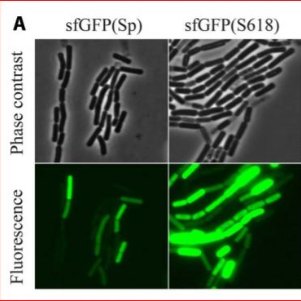Oct 24, 2020
Testing safety mechanism
- 1Unversity of Groningen
- iGEM Groningen 2020

Protocol Citation: Andreea S 2020. Testing safety mechanism. protocols.io https://dx.doi.org/10.17504/protocols.io.bkuvkww6
License: This is an open access protocol distributed under the terms of the Creative Commons Attribution License, which permits unrestricted use, distribution, and reproduction in any medium, provided the original author and source are credited
Protocol status: Other
The protocol is developed based on literature and has not been tested yet.
Created: September 04, 2020
Last Modified: October 24, 2020
Protocol Integer ID: 41589
Abstract
In order to test the efficiency of the kill switch mechanism, we plan on performing the following experiments:
Test amino acid autotrophy in vitro
An overnight culture will be used to inoculate a test culture. The knock out strains will be grown in a medium containing the test amino acid and then transfered to a minimal medium lacking the specific amino acid. Samples of 0.5 ml will be removed every 30 min to test the OD.
Testing solanine dependency in vitro
A test culture will be inoculated from the overnight culture. The cells will be grown in LB supplemented with solanine (CONCCCCCC). The cells will be collected, washed and resuspended in LB lacking solanine. Samples of 0.5 ml will be removed every 30 min in order to test OD.
Testing dependency in soil
The GFP-mutant strains (amino acid auxotrophs and solanine dependent mutants) will be inoculated at the root of the potato plants. The potato plants will be grown and described as above.
Test safety mechanisms in the lab
Test safety mechanisms in the lab
Plate mutants on minimal media supplemented with the auxotrophy amino acid or solanine.
Pick one colony and inoculate 5 mL . Grow B. mycoides Overnight 200 rpm, 30°C
The next day inoculate a working culture (30 mL media + 1% overnight culture)
Grow at 200 rpm, 30°C until OD600nm is 0.5
Collect cells by centrifugation 4000 x g, 4°C, 00:10:00
Wash 5 times with growth media (without amino acid)
Note
This step may need ajustment. The purpose is to eliminate the dependency molecule from the growth medium
Resuspend in 30 mL minimal media.
Divide culture in 2 x 15 mL cultures.
Supplement one of them with the required amino acid.
Incubate both samples at 200 rpm, 30°C
Every 00:30:00 take a 0.5 mL sample and check OD600
Expected result
The OD of the sample + amino acid will increase exponentially
The other one will remain 0.5
Test safety mechanism in soil
Test safety mechanism in soil
Grow potato plants in a 40 cm diameter pot.
Inoculate 5 mL of a GFP-labeled B. mycoides (auxotroph) culture in exponential growing phase (OD600nm=0.5)
For a negative control use GFP-labeld B. mycoides.
Protocol

NAME
Fluorescent labeling Bacillus mycoides
CREATED BY
r.rajadhyaksha
Routinely culture Bacillus strains in Luria-Bertani (LB) medium at 30 °C with aeration at 200 rpm.
Prepare the B. mycoides strain aliquotes for electroporation.
Cultivate the bacterial strain overnight in LB broth at 30 °C and at 180 rpm.
Transfer 1 mL of the overnight culture into 100 mL of LB medium (with 2% [wt/wt] glycine) and incubate it at 30 °C and 180rpm until optical density at 600 nm is 0.4 to 0.7.
Centrifuge the cells and wash the pellets with increasing concentrations of ice-cold glycerol (2.5%, 5%, and 10%). Resuspend this pellet in precooled electroporation buffer (10% glycerol) and shock freeze in liquid nitrogen.
Add the library vector DNA in an amount of 2 µg to the cells, and perform electroporation. The settings for electroporation are 2.0 kV, 25 lF and 200 X in a 2-mm cuvette using a Bio Rad Gen Pulser II electroporation system (Bio-Rad).
Add 1 mL of LB medium and grow the cells for 02:00:00 at 30 °C and 150 rpm for recovery and then plate on LB-Cm4 agar.
After 24:00:00 of growth at 30 °C , harvest the colonies from the plates and pool in LB medium
Store the libraries at -80 °C as 15% glycerol stocks.
Inoculate the B. mycoides strain mKate2mut library in 50 mL of LB-Cm4 and grow at 7 or 6 to an OD600nm of 0.3-0.6.
B. mycoides has been seen to show extensive cell-chaining and hence a mild sonication step of 4 rounds of 3 X 10 pulses of 1s with an amplitude of 30% can be applied to disassemble the aggregated cells.
Sort the cells on a flow cytometer at 20 psi using a 70 micromolar (µM) nozzle at a flow rate of 1.0 with the highest sort precision mode (0– 32-0 sort purity mask).
Using a sequential gating strategy with FCS height versus widths, followed by SCC height versus width, cellular debris, and chained cells can be excluded.
To separate the brightest variants choose a cutoff of 3% of the brightest event in the first round of cell sorting and 0.3% of the brightest events in the second round of sorting with the light scatter parameters.
After FACS sorting, plate the final fluids containing bright cells on LB-Cm4 plates and grown them overnight at 30 °C .
Observe the colonies using a fluorescence microscope. Keep the filter setting for GFP as excitation at 460/480nm and emission at 495/540 nm with a 485 nm dichromatic mirror; for RFP, the filter setting can be kept as excitation at 545/580 nm and emission at 610 nm with a 600 nm dichromatic mirror.
Capture the images on a camera and calculate the intensity of single-cell with Image J software.
Calculate the total cell fluorescence the formula is: Corrected total cell fluorescence (CTCF) = Integrated Density – (Area of selected cell x Mean fluorescence of background readings)
Take soil samples of control and mutants from:
- as close to the root as possible
- 10 cm distance fro m root
- 20 cm distance from root
- 30 cm distance from root
- 40 cm distance from root
- 50 cm distance from root
